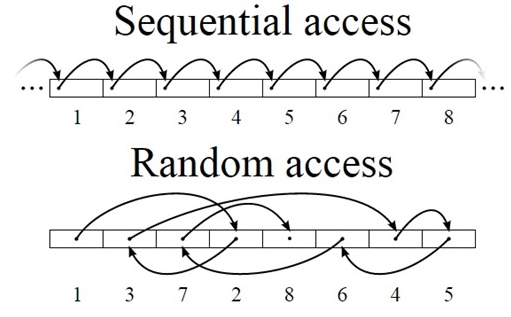常见的性能术语有哪些?
适用场景
- Data ONTAP 8.X
- ONTAP 9.X
- 多个ONTAP子系统中通常使用的性能概念和术语以及机下指标。
问题解答
- 吞吐量—通过通信通道传输的数据速率、通常与带宽互换或混淆
- 单位
- OPS/秒或IOPS
- 字节/秒
- MB/秒
- GB/秒
- 单位
- 带宽—可通过通信通道传输的最大可能数据速率、通常与吞吐量互换或混淆
- 单位
- 字节/秒
- MB/秒
- GB/秒
- 单位
- 延迟—自发出输入或命令以及收到响应以来的总时间
- 单位
- 秒(秒)
- 毫秒(毫秒)
- 微秒(us)
- 单位
- 利用率—衡量给定资源在采样周期内的利用率时长;利用率是一种有用的性能指标、但对于Data ONTAP而言、不应作为主要指标
- 单位
- %
- 单位
- 瓶颈—计算系统中影响性能的拥塞点、环境中可能存在多个瓶颈
- NetApp技术支持希望首先解决造成总体延迟的最大瓶颈问题
- 服务中心-服务系统中的处理点以及与在该中心排队和处理请求关联的时间。
- 延迟中心-该延迟中心的队列时间。
- 网络处理- ONTAP的网络和协议处理部分。
- 过去、这也称为N-Blade、因为它在与D-Blade结合使用之前是一个单独的刀片式服务器。
- N刀片术语有效、可以互换使用、但它是一个传统术语。
- 此处的主要处理点是网络免除CPU域。
- Data Processing—对操作的WAFL处理、或文件系统级别的数据处理。
- ONTAP的网络处理节点通过本地网络处理节点向Data Processing节点发送请求。
- 将拥有数据LIF的节点视为远程节点、将拥有磁盘的节点视为本地节点。
- 过去、这种系统被称为D-Blade、原因与N-Blade相同、在某些文档中一直存在。
- CPU_ex免税 是Data Processing处理的主WAFL域、但其他一些CPU域属于ONTAP的Data Processing部分。
- ONTAP的网络处理节点通过本地网络处理节点向Data Processing节点发送请求。
- 并联—计算系统中工作负载并行度的测量
- 工作负载的并行性越多、在任何时间点"运行"的同时操作就越多
- 这样、系统就可以更高效地处理工作、并在更短的时间内完成更多操作、即使每个操作的延迟与低并发工作负载相同也是如此
- 《小定律》显示了稳定状态下吞吐量、延迟和并发性之间的关系。虽然看上去很简单、但这是一个非常显著的结果:
Throughput = Concurrency / Latency- 延迟由Data ONTAP控制
- 并联由客户端/应用程序控制
- 为了获得最佳吞吐量、应考虑降低延迟和/或增加并发性
示例:
假设请求需要1毫秒(ms)才能完成。如果应用程序使用一个线程并执行一次出色的读写操作、则应达到1000 IOPS ( 每个请求1秒或1000毫秒/1毫秒)。理论上、如果线程数加倍、则应用程序应能够实现2000 IOPS。如果每个线程的未完成异步读取或写入操作增加一倍、则应用程序应能够实现4000 IOPS。实际上、由于客户端在任务计划、上下文切换等方面的开销、请求速率并不总是线性扩展。
注意:此示例显示了如何通过从客户端增加并发性来优化吞吐量、前提是1毫秒延迟已经足够好、并且从延迟角度看没有进一步改进的余地。
- I/O或块大小-是指输入/输出操作的大小、可通过以下等式计算得出:
I/O size = Throughput/IOPS
I/O大小越高、吞吐量越高。
- 随机度-是指以不可预测的顺序执行的工作负载、没有顺序或模式
- 顺序-指按预定顺序执行的工作负载。可以检测到许多模式:向前、向后、跳过计数等

追加信息
- 关于小法律的"文法"页面
- 吞吐量和延迟有何区别?
- 上述许多指标均可在命令集中找到: